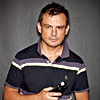 |
The canonical narrative of the St. Valentine’s Day Massacre states that Al Capone was responsible for the killing of seven men in a garage on North Clark Street in 1929. Jonathan Eig has unearthed a different—but more mundane—explanation not involving Capone, which he recounts in The Coldest Case, excerpted from his forthcoming “hybrid biography and manhunt,” Get Capone. “So much of our history is invented or polished or embellished over the years,” says Eig, who was on the editorial staff of Chicago from 1996 to 2000. “The further you get from the truth, the harder it is to buff it back.” He came across the alternative St. Valentine’s theory as he worked through never-before-seen papers of the U.S. attorney who pursued Capone. Eig also discovered a letter related to the case hiding in plain sight on the FBI website. His account threatens to make scores of Mob movies inaccurate. “Nobody really wants to hear the original story, because the polished one is sexier,” Eig says.
 |
The scheduled model didn’t show up at the photo shoot for Topsy-Turvy, this month’s fashion feature. Happily, her replacement had just the right look, energy, and enthusiasm for the dynamic motion shots that TOM CORBETT, the photographer, was aiming for. “She just kept on going, jumping in high-heeled shoes,” he says. “She was a real trouper.” Flexibility is the key to a successful shoot. “It’ll fall into place. It’ll work out. It’ll happen in the end. You need to have an element of spontaneity, to not overplan things,” he says. “Beautiful clothes help as well.” His work has appeared in Vogue, Elle, and The New York Times Magazine.
Chicago’s online editor, ESTHER KANG, is a lifelong baseball fan—she used to lie about having finished her homework so she could stay up to watch the Seattle Mariners, her team of choice despite growing up in the D.C. area. Now a Cubs fan, she hatched the idea of interviewing the former Cub and current writer Doug Glanville at Wrigley for an online video to accompany Josh Schollmeyer’s Sports story on Glanville, “Man of Letters.” “I tried to be mature and contain my excitement about being on the field,” she says. Glanville talked about why he settled here after retiring, what he does with his time now, and his playing days in Chicago—remembering, for example, eating French toast (he loves breakfast) at Salt and Pepper near Wrigley on his first day as a player. The video appears on Chicagomag.com.
In addition to writing for Best New Restaurants this month, PENNY POLLACK compiled “Chicago Eats Out,” a list of the top 40 Chicago restaurants of all time—the latest in a monthly series of Top 40 lists counting down to the magazine’s 40th anniversary in December. “These are places that made their mark,” says Pollack, Chicago’s dining editor. “It’s as much fond memory as it is great dining.” The list stretches back to the 19th century, but modern times are well represented. “In the eighties, Chicago started to rise,” Pollack says, citing Charlie Trotter’s and Gordon. Chicago went from a meat-and-potatoes town to a culinary center of gravity, which couldn’t have happened without willing customers. “The key was that we embraced it,” Pollack says.
 |
Although she moved to New York shortly after graduating from Northwestern University in 2006 with degrees in art history and journalism, RACHEL WOLFF keeps one foot in Chicago, her hometown. The art scene here has less turnover, she says, and therefore more solidarity, than New York’s. “Nearly every Chicago artist I’ve interviewed knows every other,” she says. “Half of them went to school together or have worked together—some of them have even lived together.” In the Arena story “Urban Outfitter,” Wolff writes about Theaster Gates Jr., who pursues social change through his art. Wolff’s work appears regularly in New York magazine, The Daily Beast, and Art + Auction.
Photography: (Eig) Lizz Kannenberg, (Corbett) Courtesy of Tom Corbett, (Wolff) Hannah Wolff



